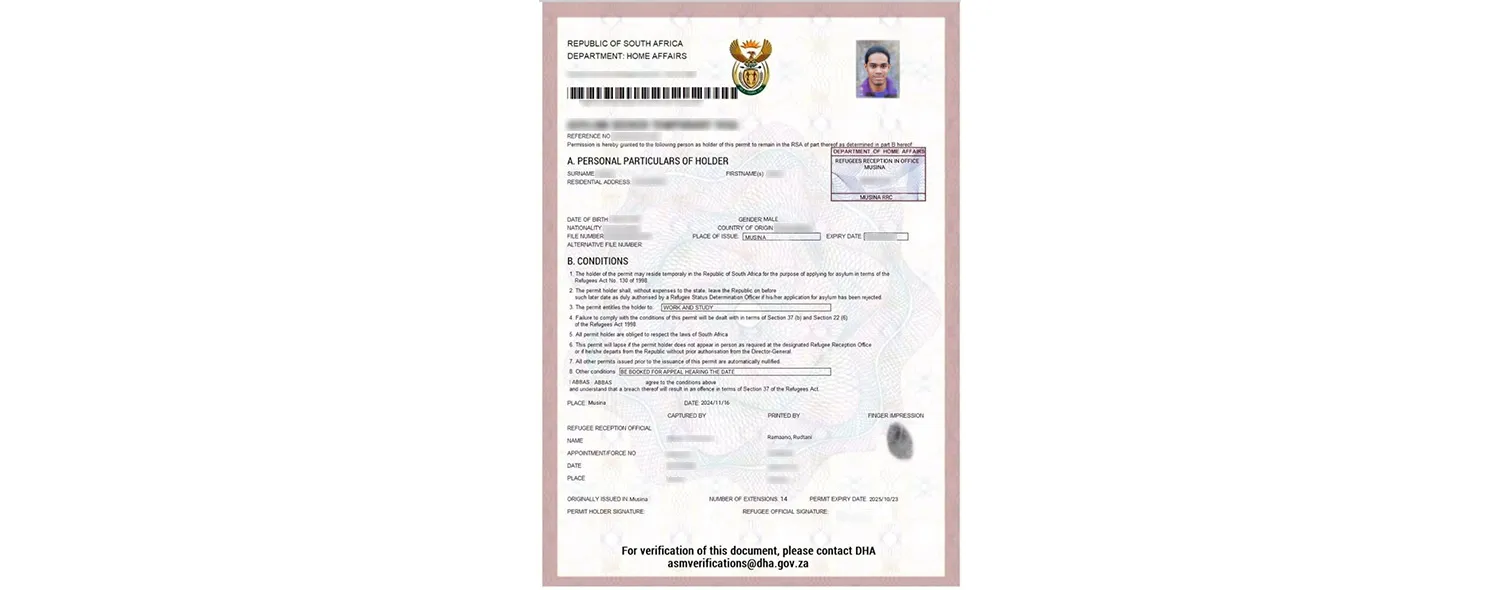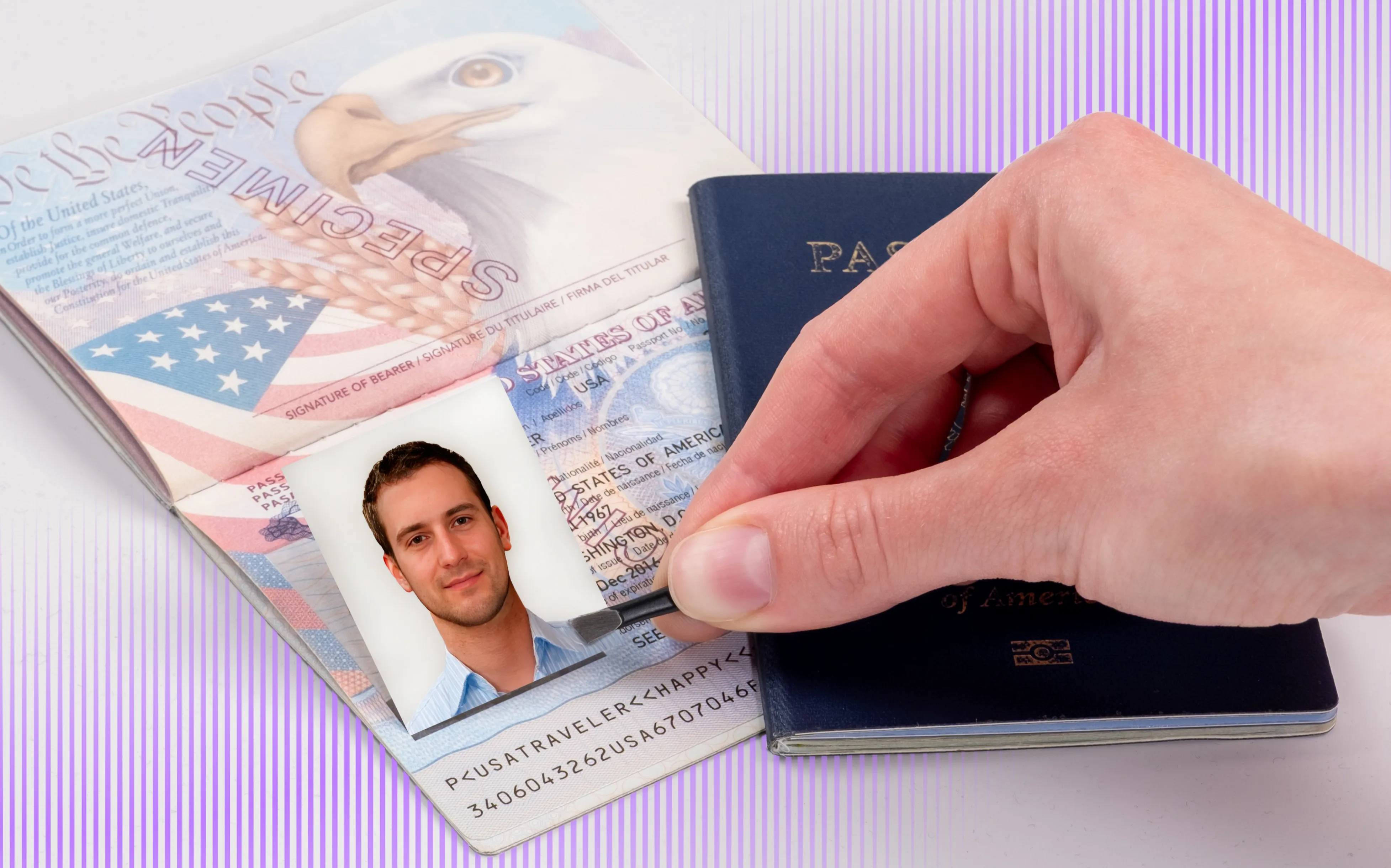While many countries are shifting to biometric documents—especially passports—South Africa still primarily issues machine-readable travel and domestic IDs. The lack of electronic chips in most local documents is just one of several challenges in processing them.
Let’s take a closer look at other notable features.
The challenges of processing South African IDs
In South Africa, people speak up to 12 different languages. But when it comes to ID documents, issuing authorities use English, occasionally adding French.
So, if non-Latin scripts aren’t the issue here—what makes South African IDs unique?
Non-biometric passports
The current series of the South African passport has been in circulation since 2009. Although they are non-biometric, these documents include a wide range of modern security features. The passport has a polycarbonate data page that contains dynamic security features such as a Multiple Laser Image, Optically Variable Ink, and hologram. Also, Invisible Personal Information is embedded within the main portrait.

In the latest series of the South African passport, many outdated features—like laminated paper-based data pages—were replaced with more advanced security elements.
Passport data is represented in English and French, which are ICAO-compliant languages for travel documents. For example, the holder’s nationality appears in both. Overall, the layout and data structure are standard, which simplifies OCR during remote verification.
▶️ Take a closer look at the hidden design features of the South African passport in this video overview:
Interestingly, South Africa’s travel documents for non-nationals look almost identical to the passport—even the inscriptions on the datapage are the same. The main differences: they’re valid for five years instead of ten, and the nationality field reflects a country other than South Africa.

South African authorities issue lookalike passports to non-nationals, with only minor differences from standard ones.
As with any non-biometric document, remote verification relies on reading the machine-readable zone (MRZ) and visual information, and cross-checking this data. However, one of the most important checks is document liveness detection through the analysis of dynamic security features.
A biometric travel document for airline workers
Beyond passports, South Africa also issues special ID cards for aircrew members. These documents serve as visa waivers, allowing holders to cross international borders at airports without additional entry permits.
There are also professional IDs—for example, the South African crew member certificate is a biometric ID1-sized card with data in both English and French. Along with the usual fields like name, gender, and nationality, it lists the holder’s occupation, such as “pilot.” The certificate can be valid for up to ten years.

This certificate aligns with ICAO-compliant ID cards in terms of layout, dataset, and security features.
The document includes a hologram over the portrait, MLI, and a one-dimensional barcode (code 128) containing data from the visual inspection zone. On the reverse, it features an MRZ.
Thanks to these features and the presence of an electronic chip, the certificate supports NFC-based verification, making the process faster and more secure.
Non-standard domestic identity documents
In South Africa, different types of IDs are used for in-country identity confirmation.
The most common is the polycarbonate smart ID card, issued to citizens and permanent residents from visa-exempt countries. The “smart” part refers to its embedded electronic chip that stores biometric data. However, these chips are not ICAO-compliant, meaning they can’t be read during standard remote verification.

The 2013 series includes two barcodes on the reverse—both readable if your solution supports Code 39 and PDF417.
Although the South African ID card follows the ID1 format (typical for identity cards), it features a custom layout with a left-aligned portrait and no MRZ. It includes a hologram over the photo, an OVI element on the front, and an MLI on the reverse side—making the card suitable for liveness checks during authentication.
The document is issued in English only and contains basic personal data, along with a 13-digit identity number in the format YYMMDDSSSSCAZ. This number is also encoded in the two barcodes on the back and can be used for verification. The PDF417 code also stores visual data—name, gender, nationality, place of birth, etc.
| How to read the South African Smart ID number | |
|---|---|
| Segment | Meaning |
| YYMMDD | Date of birth |
| SSSS | Gender indicator (0000–4999 = female, 5000–9999 = male) |
| C | Citizenship status (0 = South African citizen, 1 = permanent resident born abroad) |
| A | Usually 8 or 9 |
| Z | Check digit for validation |
Some citizens still use ID books—paper-based booklets which polycarbonate cards aim to replace. South African ID books include a portrait and personal details—name, country of birth, date of birth, and issuance date. There is also an ID number and barcode. Interestingly, the document does not contain expiration dates, making it indefinite.

Paper-based ID books lack dynamic security features, making them fraud-prone during remote verification.
Other residency documents include the residence permit, a paper-based A4-format document with personal details, issue date, and official stamps. Interestingly, it is issued to permanent residents and remains valid as long as the holder stays in the country. Short-term residents, such as students and tourists, typically apply for various visas.
A similar format is used for documents issued to refugees and asylum seekers, with the addition of the holder’s portrait and fingerprint. These documents also state the holder’s rights—for example, permission to work or study—and include an expiration date.

The residence permit for refugees or asylum seekers in South Africa has a format similar to the permanent permit but contains more details on the holder.
Another widely used ID is the driver’s license, the second most common identity document in South Africa after smart ID cards. It features a similar layout with the photo on the right and is also issued in English. However, it’s paper-based and laminated, which can cause scanning issues due to glare and layered security elements.

The laminated license includes the country name embedded in the top layer—a feature that can interfere with data recognition.
The document contains standard fields: personal information, date of birth, issue/expiration dates, and permitted vehicle types. It also includes the same 13-digit ID number found on ID cards. On the reverse, there’s a PDF417 barcode that contains both visible data and the holder’s fingerprint. The regular driver’s license is valid for up to five years.
How to effectively process South African documents
To ensure accuracy, your solution for South African ID verification should include the following key checks:
Document liveness detection: Most South African IDs are non-biometric, so NFC verification isn’t an option. However, they often include dynamic security features like holograms, OVIs, or MLI. Detecting these features confirms that a real, physical document is in front of the camera.
Barcode and MRZ reading: All South African IDs (except A4-format permits) contain machine-readable elements, such as barcodes or MRZs. These often encode the same data as the visual zone and should be cross-checked. The 13-digit identity number found in ID cards and driver’s licenses can also be validated.
Advanced OCR capabilities: Some South African IDs have glare-prone surfaces and bright holograms over critical data fields. Accurate capture and high-precision OCR are essential for reliable data extraction in these cases.
NFC verification: While the only biometric document in South Africa so far is the crew member certificate, the country has announced upcoming upgrades to its passports and ID cards, making them electronic. You can already equip your system to support NFC-based verification.
Document templates in place: Your system should have up-to-date templates for both valid and obsolete South African IDs to recognize and verify documents correctly. Regula offers the world’s largest document template database, with over 16,000 templates from 254 countries and territories.
Got a specific challenge in South African ID verification? Let’s solve it together.





